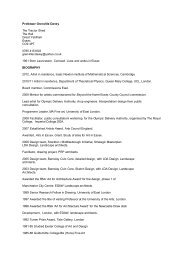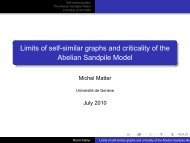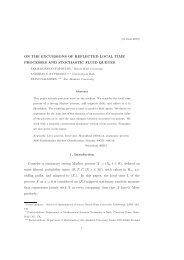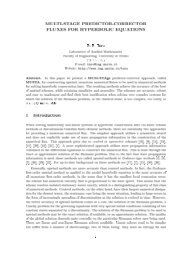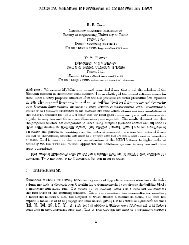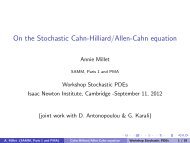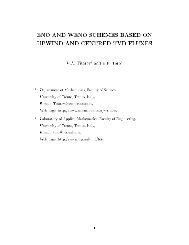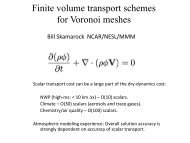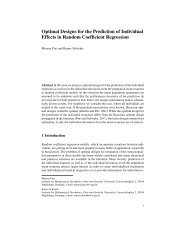A Size Index for Multitape Turing Machines - Isaac Newton Institute ...
A Size Index for Multitape Turing Machines - Isaac Newton Institute ...
A Size Index for Multitape Turing Machines - Isaac Newton Institute ...
You also want an ePaper? Increase the reach of your titles
YUMPU automatically turns print PDFs into web optimized ePapers that Google loves.
14 RAINER GLASCHICK<br />
4 .0. --- 1 Q=0, next instruction<br />
Just the direction of skipping is changed from backwards to <strong>for</strong>wards, and using<br />
the cyclicity of the tape <strong>for</strong> backward jumps. However, this slows down the execution,<br />
as actions like skipping over a string of marks each time cycle the P-tape,<br />
making demonstrations nearly incomprehensible. Also, the dynamic stop is hard<br />
to see, but could be done as be<strong>for</strong>e, though not in the physical machine:<br />
3 111 RR- 4 R has mark, end found: need to skip<br />
3 101 --- 0 R has mark, end found, stop<br />
Because tape P has one action less, the machine has two less, thus the basic TM<br />
index is<br />
�<br />
6 · 7<br />
4 · = 21.2<br />
2<br />
Adding the penalty <strong>for</strong> the cyclicity of tape P, gives an estimated TM index of:<br />
�<br />
8 · (7 + 1)<br />
4 ·<br />
= 22.6<br />
2<br />
4.4.3. The compact machine. As I observed only recently, in state 2 of the above<br />
machine tables, tape Q is used as auxiliary state memory (similar to Hooper).<br />
Taking this further on, one state may be saved:<br />
S PQR PQR S’<br />
1 100 R-M .<br />
I: P=1 is punch, Q is zero on entry<br />
mark while not marked, next instruction<br />
1 101 R-- 0 if already marked, stop<br />
1 00. RR- . save 0 in Q, change to alternate state<br />
1 11. RLR . was 01: R, next instruction<br />
1 01. RL- 2 consumed two zeros, continue decoding<br />
II: L or Jump; Q is zero on entry<br />
2 10. R-L 1 was 001: L, next instruction<br />
2 00. RR- . bias Q, change to alternate state<br />
2 010 R-- . R has space, no jump, skip zeroes<br />
2 110 RL- 1 R has space, no jump, done<br />
2 011 RR- . R has mark, jump, count number of zeros<br />
2 111 L-- 3 end of jump instruction, execute jump<br />
III: execute jump<br />
3 01. L-- . skip zeros backwards<br />
3 11. LL- . skip back and count instruction<br />
3 00. R-- . Q zero, be<strong>for</strong>e end of next instruction<br />
3 10. R-- 1 Q zero, continue with next instruction<br />
It uses tape P bidirectional, and there are 8 input symbols and 8 output actions,<br />
giving a symbol equivalent of 5.7. With with only 3 states the basic TM index is:<br />
�<br />
8 · 8<br />
3 · = 17.0<br />
2<br />
This machine stops if an already marked place has to be marked, which is possible<br />
here. Although this increases the ef<strong>for</strong>t <strong>for</strong> some trans<strong>for</strong>mations from standard<br />
TMs to Wang-Hasenjaeger TMs, here the goal is to have a low TM index. Just one<br />
action penalty <strong>for</strong> the cyclic tape gives an estimated TM index of:<br />
�<br />
8 · (8 + 1)<br />
3 ·<br />
= 18.0<br />
2




